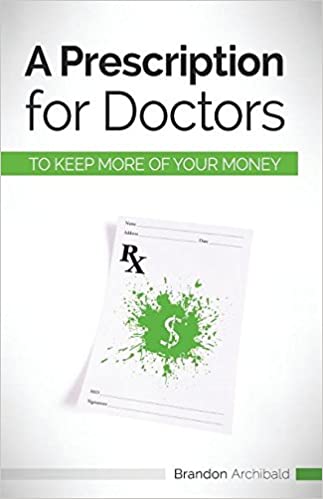I’m an author and advisor that frequently writes and lectures for physicians, primarily who operate private practices. My goal is to promote ways for physicians to keep more of their money, plan for the future and operate more profitably. I’d like to make myself available to the journal in a way that you believe I could be of the most value, be it through lectures, article publication or providing my books to members. Your assistance will be greatly appreciated. An excerpt from a recent article is included in the summary below.
5 Tax Strategies Every Physician Should Know. As the ACA drastically changes the medical industry, many private practices face shrinking reimbursements, new electronic recordkeeping requirements and additional administrative burdens. Operating a practice profitability and efficiently are as important now as was ever before. Understanding a few added concepts can add great financial value to your practice.
#1) Understanding Where Your Taxation Is Coming From. Many practice owners I talk to don’t have a full understanding of where their tax liability comes from: the difference between federal income tax and self-employment tax. Most often the brunt of physicians’ taxation comes from self-employment tax. Learning to reduce this taxable amount can allow you to keep more of your revenue.
#2) Income Shifting. Earned income is taxed differently than passive income. Sometimes income can be shifted from business profit into passive income, thereby reducing your tax exposure. Shifting income to minor children is another way to possibly reduce your self-employment tax.
#3) Income Diverting. Income shifting is great, but diverting income as ‘tax free’ is better. As one example, take medical expenses you (and your family) incur. Based on my experience, many physicians are missing out on a smarter way to handle their medical expenses. Using a formal arrangement created under the tax code may be one way you could bypass taxation on thousands of dollars creating a huge tax benefit!
4) Reducing taxes with a specific retirement account. It may be possible that your current retirement plan may be limiting your tax benefits. Prior to a retirement plan where employees were able to define how much they would contribute, you would have been more likely to see a pension or defined benefit plan. In this case, one defines the contributions, and the other defines what benefits would be given at retirement age. The Defined Benefit plan (DB) is the traditional pension-style plan that defines a specific benefit to be received at retirement. These plans can have very high contribution limits, so they are often ideal choices for professionals, especially doctors, who have few or no employees, need to shelter a large amount of money annually, and who would also like to potentially save thousands upon thousands of dollars on their taxes each year.
5) Put your expense categorization on auto-pilot. Lack of good business administration leads more than half of all new businesses into the ground in the first year of operation. With new web-based tools that are free you can minimize the time involved in tracking your numbers. One example is waveaccounting.com. You can allow this program to automatically categorize your expenses and income through your bank account so that sorting through those receipts can be a thing of the past. With the click of a button you can see exactly how profitable you’re running & project throughout the year what your potential tax liability could be, thereby providing you with the advanced knowledge to adjust from time to time in order to best maximize your income against taxation. If you know how to use these concepts to the full you could greatly impact your practice’s profitability.
To learn more about what I teach that helps physicians keep more of their income visit: https://theivyag.com/books/ , or contact me for a personal consultation.
Continue Reading The Ivy League AG Blog

